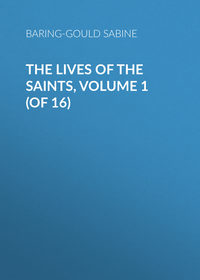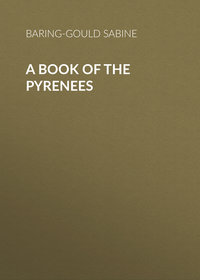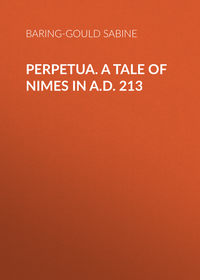 полная версия
полная версияThe Lives of the Saints, Volume III (of 16): March
The nobles of Hungary, dissatisfied with Matthias Corvinus, their king, son of the great Huniades, begged the king of Poland to allow them to place his son Casimir on the throne. The saint, then not quite fifteen years of age, was very unwilling to consent; but in compliance with his father's will, he went at the head of an army of twenty thousand men to the frontiers in 1471. There hearing that Matthias had formed an army of sixteen thousand men to oppose him, and that pope Sixtus IV. had sent an embassy to divert his father from the expedition, and finding that his soldiers were deserting him in great numbers, he joyfully returned. However, his conduct gave such offence to his father, whose ambition had been roused, that he was forbidden by him to enter Cracow, and ordered to take up his residence in the castle of Dobzki. After this, nothing would again induce him to resume the attempt, though again pressed by the Hungarians, and urged by his father. As the old Russian churches were falling out of repair, Casimir, with more zeal than discretion, persuaded his father to pass an edict forbidding the restoration and reconstruction of churches which did not belong to the Latin rite.
Falling into a decline, the physicians recommended that he should relax his rigid chastity, but the young prince indignantly refused to defile his virgin body on the chance of thus prolonging his life a few months; and he died at the age of twenty-three, on March 4th, 1484, and was buried at Wilna, where his body is still preserved.
March 5
S. Theophilus, B. of Cæsarea, in Palestine, circ. A.D. 200.
S. Adrian, M. at Cæsarea, in Palestine, A.D. 308 (see S. Eubulus,March 7th).
S. Phocas, M. at Antioch, in Syria, circ. A.D. 320.
S. Gerasimus, Ab. in Palestine, A.D. 475.
S. Kieran or Piran, of Saigir, B. of Ossory, circ. A.D. 552.
S. Virgilius, Abp. of Arles, 7th cent.
S Drausinus, B. of Soissons, after A.D. 675.
S. Peter de Castelnau, Mk. M. at S. Gilles, in the Narbonnaise,
A.D. 1209.
S. John-Joseph of the Cross, C. at Naples, A.D. 1734.
S. PHOCAS, M(ABOUT A.D. 320.)[All the Latin Martyrologies, from the mention in which all that is known of him is derived.]
At Antioch, after many sufferings endured for the name of Christ, Phocas triumphed over the Old Serpent, a victory which is testified, to this day, by a miracle. For whoever is bitten by a serpent, having touched, full of faith, the door of the basilica of the martyr, is immediately cured, the poison at once losing its power; so says the Roman Martyrology.
S. GERASIMUS, AB. IN PALESTINE(A.D. 475.)[Roman Martyrology. By the Greeks on March 4th and 20th. Authorities: – Mention in the lives of S. Euthymius and S. Quiriacus, by Cyril the Monk, fl. 548]
S. Gerasimus embraced the monastic life in Lycia; he afterwards passed into Palestine, at a time when Eutychianism prevailed, and he had the misfortune to embrace the errors of that heresy; but S. Euthymius (Jan. 20th) visited him, and restored him to the unity of the faith. He expiated his error by the most rigorous fasting. He became very intimate with S. Euthymius, S. John the Silentiary, S. Sabas, and S. Theoctistus.
A great number of disciples placed themselves under his conduct, and he built a laura near Jordan, consisting of seventy cells, amidst which was a monastery for the lodging of those who were to live in community, and disciplined those who afterwards occupied the hermitages of the laura. The anchorites assembled in the church on the Sabbath and the Sunday to participate in the sacred mysteries, and on these two days they ate common food that had been cooked, and drank a little wine; on other days they ate only bread and dates, and drank water. Fires were never lighted in the cells, and the hermits slept on rush mats.
S. Gerasimus carried his abstinence further than his brethren. Throughout Lent he took no other nourishment than the Divine Eucharist.
One day as the old abbot was walking on the banks of the Jordan, he saw a lion limping, and roaring with pain. The lion, instead of attempting to escape, held up its paw, which was much swollen, and Gerasimus taking it on his lap, examined it, and saw that a sharp splinter had entered the flesh. He withdrew the piece of reed, and bathed the paw. The lion afterwards gratefully followed him to his cell, and never after left him, but was fed by the abbot. There was an ass belonging to the monastery which brought water from the Jordan, for the necessities of the brethren; and Gerasimus sent the ass out to pasture under the guardianship of the lion. One day the lion had gone away from his charge, and an Arabian camel driver passing by, stole the ass. In the evening the lion returned depressed in spirits to the monastery, without the ass. Gerasimus naturally concluded that the lion had eaten the animal, and he cried out, "Sirrah, where is the ass?" The lion stood still, and looked back over his shoulder. "You have eaten him!" said the abbot; "Let us praise God. Well, what the ass did, you shall do now." And thenceforth the lion carried the water for the brethren.
Now one day a certain soldier came to the monastery, and seeing the lion toiling under the water bottles, he pitied the lordly beast, and gave some money to the abbot to buy an ass on the next opportunity, and release the lion from its office of water-carrier. Some days after this, as the lion was near Jordan, there came by the driver who had stolen the ass, with three camels, and the stolen beast itself. The lion set up its mane and roared, and made towards the man, whereupon the driver took to his heels. Then the lion caught the end of the ass's halter, and drew it along with the camels to the door of the monastery. And thus the abbot learned that he was wrong in accusing his dumb friend of having devoured his charge.
For five years the lion was the constant companion of the old abbot, going in and out among the monks; and at the expiration of that time Gerasimus died. Now the lion was out when he departed to his rest; but when the lion returned home, he went about searching for the old man. Then the abbot Sabbatius, a disciple of the dead saint, seeing the uneasiness of the lion, said to him "Jordan, (for by that name the lion was called), our old friend has gone away and left us orphans, and has migrated to the Lord; but here is food, take and eat." But the lion would not and paced to and fro seeking the dead man, and every now and then throwing up his head, and roaring. Then Sabbatius and some of the other brethren came and rubbed his neck, and said, "The old man is departed to the Lord, and has left us." But this did not appease the lion; and the more they caressed him, and spake to him, the more agitated he became, and the louder he roared, "showing with mouth and eyes how great was his distress, because he saw not the old man."
Then the abbot Sabbatius said to him, "Come along with me, as you will not believe me, and I will show you where our old friend is laid." And he led the lion to the place where Gerasimus was buried; and the abbot Sabbatius, standing at the tomb, said, "See here is where he is buried." And then he knelt and wept upon the grave. So when the lion saw this, he went, and stretched himself on the grave, with his head on the sand, and moaned, and remained there, and would not leave the place, but was found there dead, a few days after.
It is almost needless to say that this beautiful incident has given to the abbot Gerasimus his symbol of a lion, in art.
S. KIERAN OR PIRAN, AB. OF SAIGIR(ABOUT A.D. 552.)[Irish Hagiologies, and an addition of Usuardus published in 1490. A saint of this name was venerated on this day in the Dumblane Breviary, but it is uncertain if it was the same. The Life of S. Kieran, published by Colgan, and that given by the Bollandists, are of later date, and like so many of the Acts of Celtic Saints, abound in fables.]
According to the Irish legendary lives, Kieran of Saigir was bishop in Ireland before the arrival of S. Patrick. After honouring him with the title of the "first-born of the saints of Ireland," these lives proceed to inform us that his father was Lugneus, a noble of Ossory, and his mother Liadain, of Corcalaighde, (Carberry), in South Munster. S. Kieran was born in Cape Clear Island. Having spent thirty years in Ireland still unbaptized, he heard of the Christian religion as flourishing at Rome, and went thither for the purpose of being instructed. There he was baptized, and remained twenty years, studying the Scriptures and canons, after which he was ordained bishop, and sent to preach in his own country. On his way to Ireland he met S. Patrick in Italy, who was not as yet a bishop, and who told Kieran that he would follow him to Ireland in thirty years from the date of their meeting. This must have happened in 402, and accordingly Kieran, being then fifty years old, was born in 352. When arrived in Ireland he was miraculously directed, as S. Patrick had told him he would, to the place since called Saigir, (Seir-Kieran, in King's County), where he erected a monastery. Having ordained an innumerable multitude of bishops and priests, he died at the age of 300!
Other accounts state that Kieran's meeting with S. Patrick somewhere out of Ireland occurred several years after the latter had commenced his apostolical labours in this country. Jocelin places it at a time when S. Patrick was returning from Britain, whither he had gone to obtain a supply of additional helpers for his mission, and tells us that Kieran was then one of the six Irish priests who were proceeding to foreign countries for religious improvement, and all of whom afterwards became bishops in their own country. In the Tripartite history of S. Patrick the precise place of meeting is not given; but, what is more to the purpose, it is represented as having occurred at least twelve years after S. Patrick had begun his mission in Ireland, and Kieran is stated to have then received directions from the saint concerning the district in which he should erect his monastery.
It appears, however, that he was no disciple of S. Patrick at all, and did not live in his times. His name does not occur in Tirechan's list, nor in any of the Lives of S. Patrick, except in those two just quoted, and his appearance in them is evidently due to the legends in circulation concerning the meeting. Had S. Kieran been a disciple of the apostle, how could he have become a scholar of S. Finnian of Clonard, in the 6th century? For such he is stated to have been, not only in the Life of S. Finnian, and in that of his illustrious namesake of Clonmacnois, but also in the tract which is called his first life, and which enters into more particulars than the other. S. Finnian's school could not have become celebrated before 534. In both Kieran's lives his namesake of Clonmacnois, who died in 549, and the two Brendans, one of whom died in 577, and the other a few years earlier, are spoken of as having had transactions with him.
We may then safely conclude that he belonged to the sixth century, became distinguished towards the middle of it, and died during its latter half. As this was known to be the case, his blundering biographers strove to reconcile their nonsense concerning the antiquity and privileges of Saigir, with the true date of his death, by making him die at the age of about 300 years, although, had they calculated better, about 220 years might have sufficed.
Kieran, we may safely conclude, was made a bishop about the year 538. Having retired to a lonesome spot, since called Saigir, he led at first the life of a hermit, and after some time erected a monastery, around which a city gradually grew up. Next he established a nunnery in the neighbourhood for his mother Liadania, and some pious virgins, her companions, whence the church Killiadhuin got its name. Besides the care of his monastery, Kieran was assiduously employed in preaching the Gospel in Ossory, and he converted a great number of heathen. He is usually considered to have been the first bishop of Ossory, and founder of that see. It is singular that, notwithstanding all that is said in the lives, in praise of Kieran, he is not much spoken of in the accounts of contemporary saints, and that none of the Irish annals or hagiologies give the date of his death. Hence Colgan was inclined to think that he died in Cornwall, and is to be identified with S. Piran, of Peranzabulo. But the first life hints that he died at Saigir. Although the year of his death is unknown, there can be little doubt of his having been alive after the year 550.
If S. Piran of Peranzabulo be the same as S. Kieran of Saigir, his bones have been discovered of late years, when the ancient oratory of Peranzabulo, near Padstowe, in Cornwall, was dug out of the sand. In favour of this identification, Colgan points out that S. Piran was commemorated at Padstow on the 5th March, the same day as S. Kieran in Ireland; and John of Tynemouth asserts that S. Kieran did retire from Ireland into Cornwall where he spent the latter part of his life, and died. The Cornish, moreover, change the K. of Irish names into P.
Some of the legends related of S. Kieran deserve to be recorded. He is said when a little boy to have been bitterly distressed at seeing a hawk carry off a little bird in its talons. Then he cried to God, and the hawk dropped its prey.
One day a king or chief in the neighbourhood carried off one of the nuns of the convent governed by his mother. Kieran pursued him full of wrath, and coming to the castle, bade the chief restore the poor maiden to her cell. "Not unless the cuckoo should rouse me to-morrow morning," answered the chief. Now it was mid-winter. But that night no snow fell round the house where lodged the abbot, and at early dawn a bird perched on the roof under the window of the chief, and began to call "Cuckoo, cuckoo, cuckoo!" Then the ravisher, in alarm, started from his bed, and restored the nun to her convent.
On an autumn day, Kieran noticed a magnificent bank of blackberries, so large and ripe, that he thought it a sad pity the winter should come and destroy them. Therefore he cast a cloak over the bramble. Now it fell out that the next ensuing April, Ethnea Vacha the wife of king Ængus was ill, and felt a craving for blackberries. She was then, with her husband, the guest of Concraidh, king of Ossory. Concraidh told S. Kieran of the strange wish of the lady, and instantly the saint remembered the hedge of blackberries covered by his cloak, and he went and plucked as many as he could carry, and brought them to the sick queen, and she ate them and revived.
One day S. Kieran of Clonmacnois and the two Brendans visited the monastery. The steward came to the abbot in dismay, and said, "There is nothing to offer these distinguished guests except some scraps of bacon, and water."
"Then serve up the bacon and the water," said the saint. And when they were brought on the table, the bacon tasted to every man better than anything he had ever tasted before, and as for the water, the benediction of the man of God had converted it into wine. But there was at the table a lay-brother, and when he had some bacon put before him, he thrust his platter away angrily, for he was tired of bacon, and had expected something better, when distinguished visitors were present. "Hah!" said the abbot, – 'not by way of condemnation, but of prophecy,' – "The time will come when you, son of Comgall, shall eat ass's flesh in Lent, and soon after you will lose your head."
It is also related that there was a boy came to Saigir called Crichidh of Clonmacnois, and remained for a while under the abbot Kieran. Now it was the custom and rule of S. Kieran, that the blessed Paschal fire should burn all the year. But out of mischief, as we moderns should say, "instigante diabolo," as the mediæval chronicler expresses it, the boy put the fire out. Then S. Kieran said to the brethren, "Look! our fire is extinguished by that confounded boy (a maledicto puero), Crichidh, purposely, for he is always up to mischief (sicut solet semper nocere). And now we shall be without fire till next Easter, unless the Lord sends us some. As for that boy, he will come to a bad end shortly." And so it was, for on the morrow a wolf killed the boy.
Now S. Kieran of Clonmacnois, to whom the boy belonged, hearing of this, came to Saigir, and was courteously received by S. Kieran the Elder. But there was no fire, and the snow fell in large flakes; and it was bitterly cold, so that S. Kieran of Clonmacnois and his companions sat blue with frost, and their teeth chattering. Then S. Kieran of Saigir raised his hands to heaven, and prayed, and there fell a globe of fire into his hands, and he spread the lap of his chasuble (casula), and went with the fireball in it before his guests, and they warmed themselves thereat. And after that, dinner was served. Then said S. Kieran of Clonmacnois, "I will not eat till my boy is restored to me." "Brother," answered S. Kieran of Saigir, "I knew wherefore thou didst come; the boy is now on his way hither." And presently the door opened, and the boy that the wolf had eaten, walked in alive and well.
King Ængus of Munster had seven bards "who were wont to sing before him, harping, the deeds of heroes," but these seven men were murdered and drowned in a bog, and their harps were hung upon a tree by the side of the morass. S. Kieran, at the king's request, restored the seven harpers to life, after their having been steeped in bog-water for a whole month.
Now when he was dying, Kieran besought the Lord to bless all such as should keep his festival. "And," says his historian, "on March 5th, God introduced him into the lot of his inheritance in the vineyard, and planted him in the mountain of his possession, even in the celestial Jerusalem, which is the mother of us all. Wherefore, then, my brothers, let us hold a most solemn feast to the most holy Kieran, and let the voice of praise resound in the tabernacles of the righteous; for the right hand of the Lord made virtue to spring up in this man, which may Jesus Christ for the merits of his servant Kieran cause to grow in us present likewise, that we may be meet, He being our leader, to enter into the courts of our eternal inheritance. Amen."
S. VIRGILIUS, ABP. OF ARLES(ABOUT A.D. 618.)[Benedictine and Galican Martyrologies; but at Arles on October 10th, and Greven in his additions to Usuardus. Authority: – A life by an anonymous writer, long posterior, and very credulous. It contains much idle fable.]
S. Virgilius, a native of Aquitania, retired in childhood to the monastery of Lerins, where he distinguished himself by his virtues, and was in time elected abbot. One night, says the historian of his life, who deals somewhat largely in popular legend, as he was walking round the island, as a good pastor keeping guard over his sheep-fold, he saw a strange ship drawn up against the shore, and by the star light he saw the sailors moving on the deck. Then two descended from the vessel, and coming towards him, said, "Reverend father, we know who thou art, and greatly esteem thy incomparable virtue, the fame of which is spread abroad through the round world, and many there are of the faithful in far-off lands who desire to see thy sanctity, and hear the words of wisdom that distil from thy lips. And now we are bound for Jerusalem, come therefore with us and make this journey to the holy sites, and thy name will be praised by all men." But Virgilius mistrusted this address, and he answered, "Ye cannot thus deceive an old soldier of Christ!" and he made the sign of the cross. Then the ship and the crew vanished, and he saw only the stars winking in the waves.
From Lerins he was called, in 588, to take charge of the diocese of Aries, by the unanimous voice of the people.
He is said to have been the consecrator of S. Augustine of Canterbury to his mission in England, by order of S. Gregory the Great, from whom he received the pall. He built several churches in Aries; amongst others, the cathedral, which he dedicated to S. Stephen, and the church of the Saviour and S. Honoratus. Whilst erecting this latter church, the legend says that the people toiled ineffectually to move the pillars to their destined place. At last they sent word to S. Virgil that the truck was fast, and the pillars could neither be taken on nor carried back. Then Virgil hurried to the spot, and saw a little devil, like a negro boy, sitting under the truck, arresting the progress of the wheels. Virgil drove him away, and then the columns were easily moved. By his prayers he is also reported to have killed a monstrous serpent which infested the neighbourhood. He was buried in the church of SS. Saviour and Honoratus, which he had built.
S. DRAUSINUS, B. OF SOISSONS(A.D. 675.)[Venerated at Soissons. Mentioned in some of the additions to Usuardus, and later Martyrologies. Authority: – A Life by a native of Soissons shortly after his translation, four years after the death of the saint.]
Drausinus or Drausius was a native of Soissons, and was the son of pious parents of noble rank. He was educated by S. Anseric, bishop of Soissons, on whose death he was called to fill his place. His virtues and charity caused him to be venerated as a saint immediately after his death. S. Thomas-à-Becket had recourse to his intercession when he was in France, before returning to England.
His relics were dispersed at the French Revolution, but his tomb, a very interesting specimen of Gallo-Roman art, is preserved in the Louvre. The Society of Antiquaries at Soissons has made many attempts to recover it for the cathedral at Soissons, but hitherto in vain.
B. PETER OF CASTELNAU, MK. M(A.D. 1209.)[Benedictine Martyrology, and Saussaye in his Gallican Martyrology. Authorities: – William of Puis-Laurent, and other contemporary historians of the Albigensian war, and the letters of Innocent III.]
The name of the Albigenses probably arose from the condemnation of these heretics at the council of Albi, under the presidence of Gerard, bishop of that diocese, in the year 1176.
Under the name was included that vast body of heretics which agreed on certain fundamental dogmas, but differed on minor particulars, as they borrowed more or less from Christianity. They inhabited the Duchy of Narbonne, the Marquisate of Toulouse, and the southern portion of the Duchy of Aquitaine, mixed with Catholics in some parts, in other parts comprising the entire population.
Before their condemnation by the Council, they had been known as Cathari, Patareni or Populicians, a corruption of Paulicians; and were a branch of that great Manichæan inroad which entered Germany, Hungary, Bulgaria, and Bohemia, where the name Cathari was corrupted into Ketzer, and which spread from Northern Italy into the southern provinces of France, where Manichæism completely displaced Christianity over a wide area, and gained a head and strength it was unable to acquire elsewhere.
The fundamental principle of the new Manichæans, from which, as from a centre, the different sects radiated, was a Dualism of Good and Evil Principles equally matched, the Evil Principle, the origin of the visible creation; the Good Principle, the author of that which is invisible. This opposition of matter and spirit constituted the basis of their moral systems. These systems were diverse; some, regarding everything natural and carnal as pertaining to the Evil Principle, abstained from meat, cheese, and eggs, from marriage, and from whatever employment attached them to the earth; whilst others, regarding the soul as so distinct from the body as to be incapable of being soiled or affected by the actions of the fleshy envelope, gave themselves up to the grossest licentiousness. Into the theology of these new Manichæans, contact with Christianity had introduced the person of Christ, but in their scheme He occupied no necessary place. He was held to be subject to God, and to have had but a phantom body; He neither suffered, died, nor rose again, except in appearance. But in opposition to this Docetism, John de Lugio taught that Christ had a real body; and some of the Cathari – the late Albigenses – held that the true body was born of Mary and Joseph, and proceeded from the Evil Principle, and that this body died on the Cross, but that the spiritual and good Christ was by no means to be confused with the historical Christ of the Gospels.9
With the doctrines specially professed by the Albigenses it is possible for any one, who chooses, to become thoroughly acquainted, as there is abundant material from which the requisite information can be drawn. Such are the decrees of councils condemning categorically their errors; the bulls of popes and imperial ordinances denouncing them; the letters of Innocent III.; the statutes of Raymond, Count of Toulouse; the controversial treatises written against the heretics, taking each of their doctrines in order, to refute them; and lastly, the valuable transactions of the Inquisition at Toulouse, published by Limborch, containing a great number of cases, the interrogations, and confessions, and sentences; the archives of the Inquisition at Carcassonne, portions of which are published in Vaissette, and the Inquisitorial formulary of questions put to Albigenses as to their faith, in Ricchinus.









